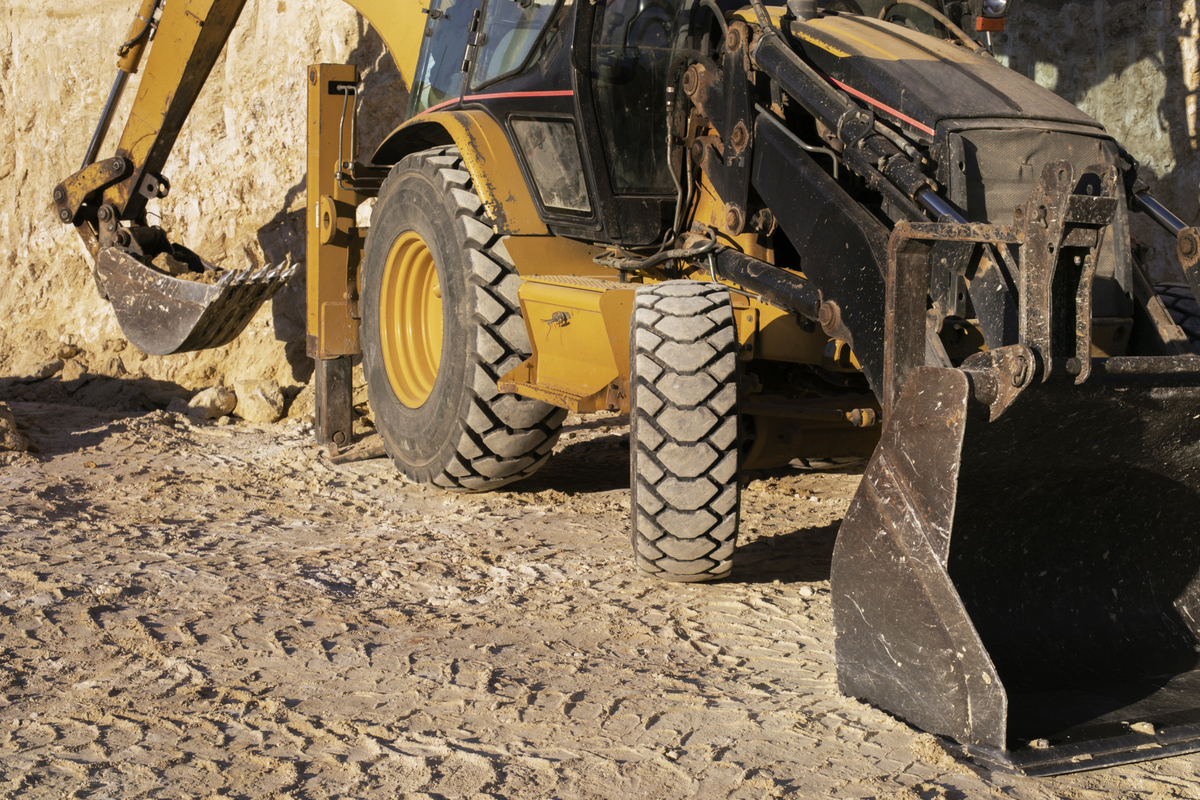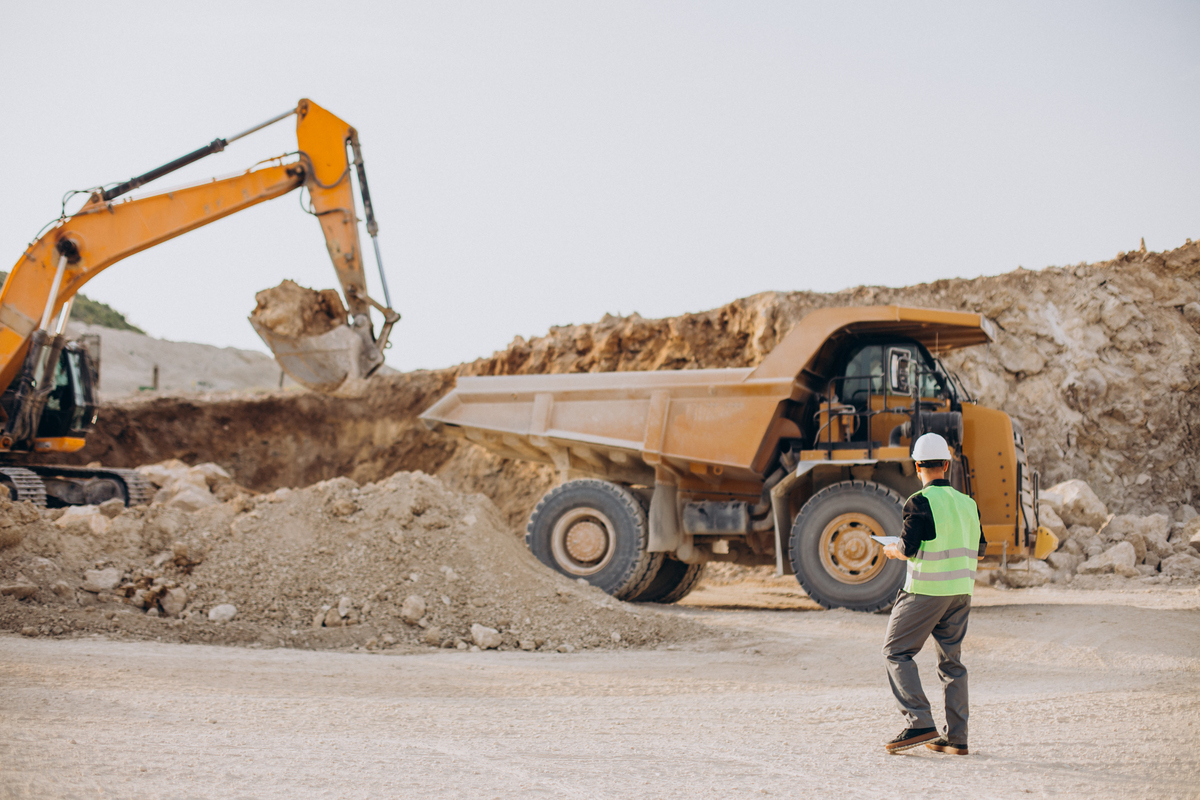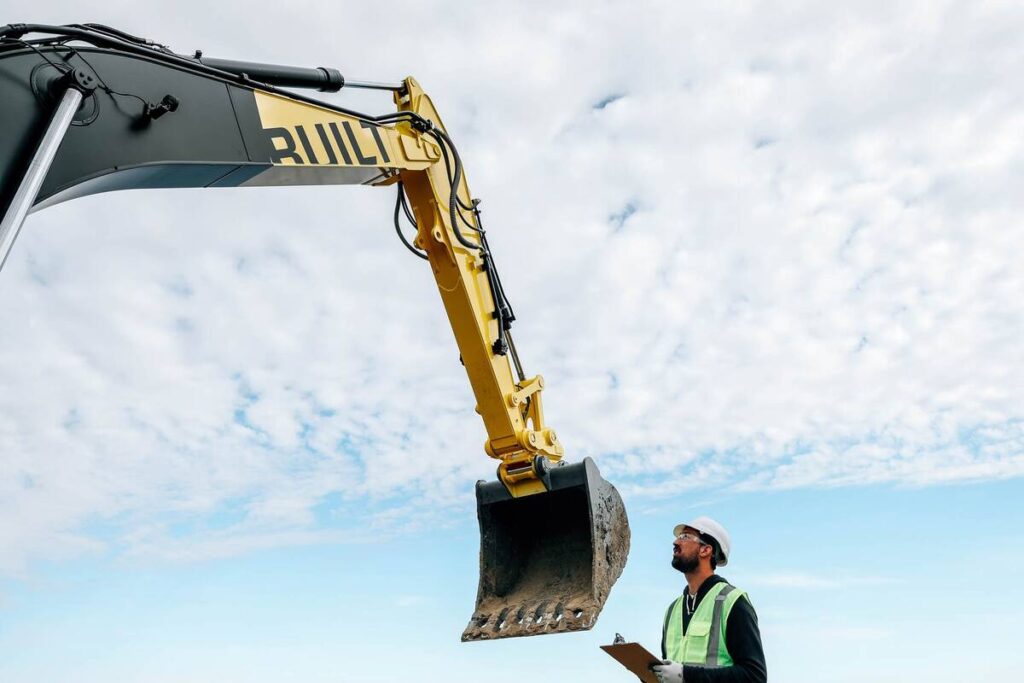Updated by Nazanin Ghodsian, 09/16/2024
Building is a labor-intensive industry, and Europe is still experiencing a labor crisis that is affecting the development of vital infrastructure such as homes, schools, and highways. So, why not let robotic excavators and diggers take over the heavy lifting? Experts at ETH Zurich’s Robotic Systems Lab in Switzerland are specifically focusing on this.
Without the need for human aid, they have successfully trained an autonomous excavator to build stone walls out of boulders that weigh several tons. The robotic excavator constructed a 65-meter-long and 6-meter-high load-bearing wall as part of their most recent endeavor. This technology has the power to completely transform the building industry by enabling quicker and sustainable construction technology.
LiDAR sensors are used by robotic excavators and diggers to survey the construction site in three dimensions and precisely locate stones and building components. These devices, which are outfitted with specific instruments and machine vision—a computer vision system—are able to identify, locate, and examine big stones in their environment in order to ascertain their approximate weight and center of gravity.
Robotic excavators and diggers employ sophisticated algorithms to ascertain the most precise location for every stone, achieving a precision of less than one centimeter. These self-contained vehicles can move 20 to 30 stones in a single load, expediting the building process from start to finish. The development of these robotic diggers and excavators could open the door for more effective and eco-friendly building methods in a variety of sectors.
Table of Contents
What are Robotic Excavators and Diggers?
In recent years, automated driving technologies have gained popularity due to their potential to increase traffic safety. Although they are very difficult to implement, robotic excavators and diggers have the potential to almost eliminate road traffic accidents, which are one of the leading causes of death in many nations.
Construction is another sector where safety is a top priority. To avoid potentially catastrophic workplace events, the construction industry has made significant investments in systems and technologies. In the US alone, 1 in 5 occupational fatalities in 2021 were related to the construction sector.
One of the new technologies in the construction industry that has the potential to increase productivity and safety is robotic excavators and diggers. These autonomous cars employ sensors to gather environmental data and use that knowledge to guide their judgments.
Suggested article to read: What are Demolition Robots in Construction? 2024 Guide
Excavation operations can be completed by robotic excavators and diggers with great efficiency and precision. Advanced sensors, machine learning algorithms, and autonomous navigation are features of robotic excavators and diggers. They are capable of precisely excavating trenches, clearing away dirt or rubbish, and getting the area ready for building. Robotic excavators and diggers can operate nonstop without the need for breaks, which boosts output and lowers personnel expenses.
Without the assistance of a person, autonomous excavators are capable of performing strenuous tasks on the job site. Robotic excavators and diggers may also work continuously, increasing productivity. They make use of a variety of technologies, including GPS, LiDAR, cameras, sensors, and artificial and machine learning.

Robotic Excavators and Diggers are a Key Innovation Area in Robotics
On construction sites, robotic excavators and diggers automate the excavation process by utilizing cutting-edge robotic technology. Real-time tracking of the amount of soil moved by robotic excavators and diggers is possible through the use of sensors that gather data about their surroundings. By lowering the amount of extra soil that is moved, construction sites can become more environmentally sustainable and efficient.
Additionally, GlobalData’s study identifies the leading businesses in each field of innovation and evaluates the possible impact and reach of their patenting activities across various applications and geographical areas. GlobalData reports that more than twenty businesses—including technology suppliers, well-known building firms, and emerging start-ups—are working on the creation and use of autonomous excavators.
Suggested article to read: The Role of Climbing and Inspection Robots in Construction Safety; 2024 Guide
The Main Advantages of Robotic Excavators and Diggers
Robotic excavators and diggers have the potential to completely transform the sector. These are a few of their main benefits:
1. Boost Rask Efficiency
Human symptoms like burnout, boredom, or disinterest in a repetitive task are not experienced by robotic excavators and diggers. Since normal humans may find repetitive or dull work boring or even prone to making mistakes due to weariness and environmental distractions, robots can therefore be more efficient at managing these duties.
That’s not to imply that robots are flawless; to consistently provide high-quality work that increases productivity on a construction site, competent humans must repair the robots regularly.
2. Reduce Operating Costs
Lower operating costs and related expenses are necessary to complete more work quickly. This benefit is inherent since robotic excavators and diggers can work far more precisely and for longer periods than human labor.
However, programming, controlling, and running robotic machinery still need humans. Because of this, there is a need for a workforce with greater skill levels who can handle the new technologies that are becoming more and more commonplace.
Suggested article to read: Bricklaying Robots in Construction Automation; 2024 Guide
3. Boost Safety and Health
Fewer accidents occur on a project in an atmosphere that is well managed. Because of the nature of the work—heavy lifting, potentially dangerous situations, and occasionally precarious platforms or terrain—the construction business has long been considered one of the riskiest. The use of robotic excavators and diggers can significantly lower the number of accidents on building sites.
4. Optimize Design Flexibility
Ever since the Roman era, buildings have undergone constant evolution to adapt to shifting societal and environmental norms. However, a lot of modern construction techniques are still applied in the same manner as they were several decades ago. Robots are a new buddy for creative construction enterprises like ours that want to take a fresh approach. Robotic excavators and diggers can be constructed or programmed to perform a variety of functions, allowing construction organizations to use more inventive and effective building procedures and methods.
5. Promote Sustainability
Robotic innovations have helped usher in an era of sustainable building practices, significantly reducing waste and the environmental impact of construction processes. Robotic excavators and diggers can optimize resources by accurately measuring and cutting materials, recovering recyclable or valuable items, and extending material lifespan and utility, thus promoting a circular economy.
Additionally, the automation capabilities of robots can lead to faster project completion and lower energy consumption, thereby minimizing the environmental carbon footprint of construction activities.

Disadvantages of Robotic Excavators and Diggers
As with everything, there are always disadvantages. Robotic excavators and diggers have certain limitations even if they can be useful.
1. Skilled Experts
Robotic excavators and diggers should only be operated by highly skilled people. This implies that it cannot be operated by other crew members who lack the required training. It can be detrimental and risky to entrust the robots to an untrained person. It is easy to misuse since it requires extra care and precision. It costs money to get more training. Nonetheless, safe and effective robotic excavators and diggers operation is required.
2. Instruction
It costs money to get more training. Nonetheless, safe and effective robotic excavators and diggers are required. Training is necessary if demolition robots are to be utilized. Nevertheless, training is costly and time-consuming. Companies who want to deploy robotic excavators and diggers need to budget more for this kind of expenditure.
Suggested article to read: The Role of 3D Printing Robots in Construction; 2024 Guide
3. Error on the machine
Unlike humans, machines are incapable of making cognitive decisions. Their movements are programmed by computer algorithms. These codes are not flawless, but they are correct. Only the specific tasks denoted by the coding can be carried out by robotic excavators and diggers. In an unexpected situation, they are unable to react and modify in the same way that a human would. It’s imperative to realize that this equipment carries some risks.
4. Cost of Investment
Robotic excavators and diggers are not inexpensive. It is unavoidable. Not every company can afford to pay the upfront cash cost. Their market value is roughly $200,000 on average. A stronger pipeline of projects is required for a sustainable return on investment. However, many construction outfitters have much lower rental prices. This is a sensible choice if you won’t be using the robot for very long.
What are the Challenges Involved With Robotic Excavators and Diggers?
The widespread use of robotic excavators and diggers on building sites is yet a few years away. The technology is still in its infancy. Despite its extensive experience in AI and robotics, Caterpillar—the world’s leading producer of construction equipment—has not yet brought robotic excavators and diggers to market.
Almost 600 autonomous Caterpillar trucks are currently in use in mines across the world. Caterpillar is a prime illustration of the difficulties robotic excavators and diggers encounter during the commercialization process. The firm has been a part of the autonomous vehicle ecosystem since the 1990s.
The dynamic nature of construction sites is a significant obstacle for driverless excavators. While self-driving cars navigate slowly changing, well-mapped routes, robotic excavators and diggers must adapt to a constantly changing environment.
This poses a technological challenge to robotic excavators and diggers designers since they must create sophisticated sensors and machine learning algorithms to guarantee their safe operation in this changing environment. Both time and money are needed for this.
In addition to the technological difficulties in achieving robotic excavators and diggers’ full potential, there are generally barriers to new technology adoption in industries like construction. In an industry with narrow profit margins, the expense of autonomous plant machinery can be prohibitive.
Suggested article to read: Top 7 Robotic Welding and Fabrication Types in Construction (2024)

What Companies Are Involved in Robotic Excavators and Diggers Research?
The previously mentioned Caterpillar, Doosan, Husqvarna, Baidu, CNH Industrial, Komatsu, Built Robotics, Hitachi, Deere, Toro, and Microsoft are among the leading pioneers in the autonomous excavator market.
Being one of the top patent filers, Built Robotics is a major participant in this field of study. The business has submitted a patent application for an excavator that can perform excavation tasks and maneuver through the intricate and dynamic environment of a dig site.
Three industry leaders in application diversification are Toro, Husqvarna, and Newmont. Regarding geographic reach, two of the top companies are Built Robotics and EquipmentShare. Aside from Built Robotics, Komatsu, Caterpillar, Kobe Steel, and Deere are at the forefront of patent filing.
Suggested article to read: What is Robotic Material Handling? 2024 Guide
How Robotic Excavators and Diggers are Changing the Construction Industry?
The building sector requires a lot of manpower. Since the construction industry is one of the least automated, it is far behind other industries in using robotic excavators and diggers, automation, and digital technologies.
These days, artificial intelligence and robotics—two of the newest technological innovations in the building construction sector—are the talk of the town. By using such technology, construction can be completed more quickly and accurately while also conserving money and other resources.
Robotic excavators and diggers integration in construction enables construction workers to achieve quality-assured outcomes and minimize human errors in a fast-paced process.
Several robotic excavators and diggers are currently available on the market to help construction professionals, even though the building business is largely manual. Furthermore, several innovations in the fields of robotics and automation for building will be made in the next ten years, which will radically transform the engineering, architectural, and construction industries. Robots are beneficial.
Though efficiency, cost- and time-savings are among the construction industry’s greatest benefits, the question of whether robotic excavators and diggers and automation can eventually replace human labor entirely remains.
Although the answer to this question is still unknown, physical work will not entirely be replaced. Robotics in construction, however, is supposed to complement human labor rather than replace it. to finally achieve enormous profits from the construction industry by raising the degree of efficiency, productivity, and accuracy of the construction activities.
Conclusion
As we discovered, the use of automation and robotics in building and civil engineering has altered architects’ and civil engineers’ perspectives. In the construction industry, the robots are revolutionary. The AEC sector is greatly impacted by the current trend of smart technologies. Despite being a little slow to implement automation, the construction industry has shown its mettle by delivering effective outcomes.
Although complete commercialization of robotic excavators and diggers is still some ways off, they can greatly increase safety, productivity, and efficiency on a building site. The importance of this robotic technology in the industry is attested to by the recent surge in research interest, even though there are still some significant obstacles to overcome in this field.
Since autonomous haulage trucks are now in use in mines and quarries all over the world, automation is currently one of the major target study areas in heavy industry. While autonomous excavators would have to cope with the more dynamic environment of building sites, these operate on clearly defined roadways.
The construction sector could transform thanks to this cutting-edge field of robotics, but first, some significant technological and financial obstacles must be addressed. Automation, not the current worker-centric working systems, is the way of the future for this industry, even though some human operators will still be required.
FAQs
What are Robotic Excavators and Diggers?
- Answer: Robotic diggers and excavators are self-contained construction vehicles that can accomplish jobs with precision and little assistance from humans. They are outfitted with sensors, GPS, LiDAR, and machine learning algorithms.
How do Robotic Excavators and Diggers Improve Construction Safety?
- Answer: By decreasing human participation in risky tasks like heavy lifting and working in unstable situations, these robots improve safety and reduce the likelihood of accidents and injuries on construction sites.
What are the Benefits of Using Robotic Excavators and Diggers in Construction?
- Answer: They contribute to sustainability by maximizing resource utilization and eliminating waste, decreasing labor expenses, increasing efficiency by working continuously without breaks, and improving excavation precision.
What Challenges are Associated with Robotic Excavators and Diggers?
- Answer: High upfront expenses, the requirement for experienced operators, technology constraints in unpredictably changing situations, and the initial outlay for training in order to ensure safe and effective operation are some of the issues.
Which Companies are Leading the Development of Robotic Excavators and Diggers?
- Answer: Some of the leading businesses that are leading the way in autonomous excavator technologies for construction applications are Komatsu, Built Robotics, Hitachi, Deere, and Caterpillar.
Suggested article for reading:
12 Cutting-Edge Technologies in Construction Automation You Need to Know
7 Innovative Construction Robotics Changing the Industry
Top 5 Workflow Automation Tools for 2024
Smart Building Technology; 2024 Guide
Futuristic Construction; Everything You need to know in 2024
Resources:
Linkedin | Technology-Innovators | WorldConstructionNetwork | CemexVentures | AzoRobotics | TheNextWeb
For all the pictures: Freepik



